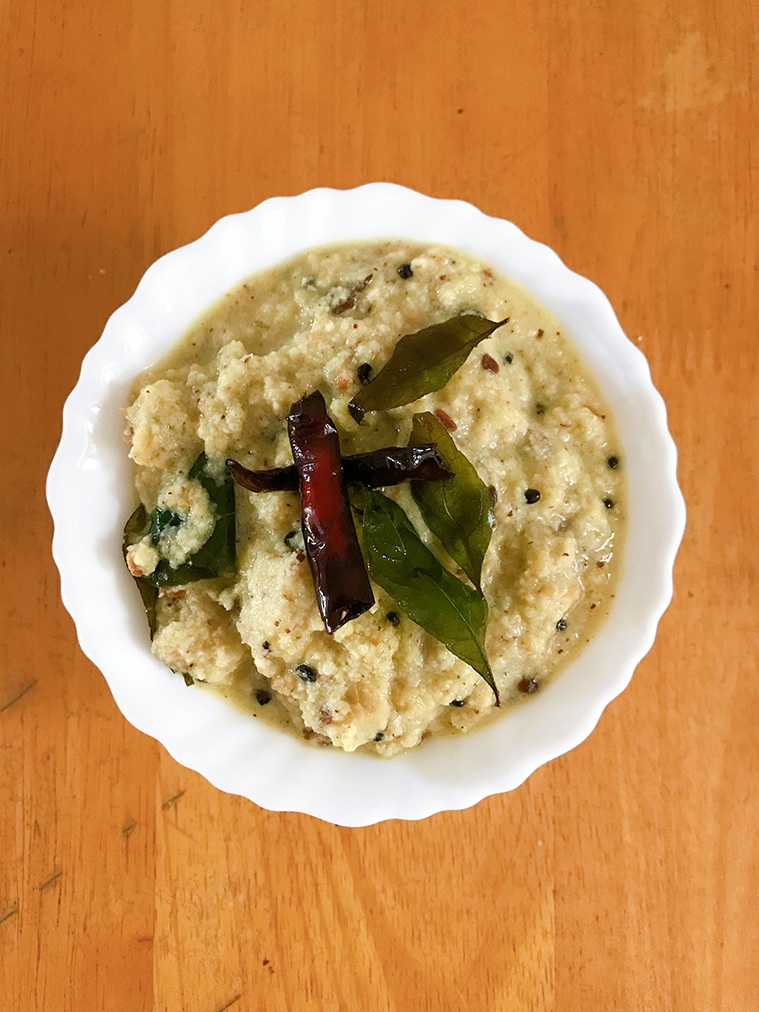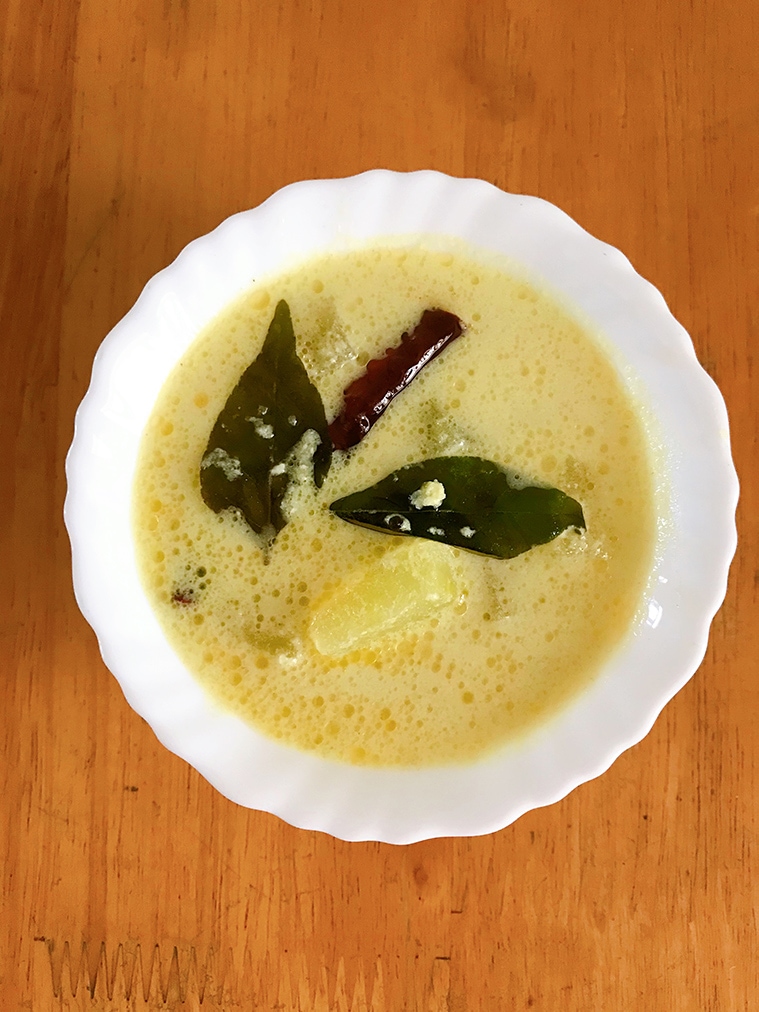 Would you like to try these Onam recipes? (Photo: Getty Images/ design: Gargi Singh)
Would you like to try these Onam recipes? (Photo: Getty Images/ design: Gargi Singh)Before you can cook sadhya, you must shop for sadhya, and while you’re picking out coconuts, coconut oil, pappadams and banana chips (both salty and jaggery-coated), do take time out to source vegetables that you might not otherwise use but which play starring roles in the sadhya. Two of these – elephant foot yam (jimikand) and ash gourd (petha) – are rarely used in this part of the country, but if you do manage to get them, try making these two fairly simple – but delicious and wholesome – dishes with them.
Chena Erissery
Erissery is one of the components of the sadhya that is categorised as ‘thottukootan kari’. Translated, it means ‘a curry that is to be dabbed at’, instead of being mixed with rice, like the curries with a more pourable consistency are. Of course, with something as delicious as erissery, one doesn’t just dab at it; in fact, I usually end up eating so much of it at any sadhya that I’m surprised at myself for not cooking it for my regular meals. But then, I suppose that will only make it less special.
Erissery’s USP is the fried coconut that forms part of the final tempering. It can be made with either elephant foot yam or raw plantain, or both together, and with yellow pumpkin and cowpeas. There’s also a version made with ripe jackfruit, yellow pumpkin and toor dal. The recipe here uses elephant foot yam (chena).
 Erissery has a thick consistency and is usually served on the side along with rice and a main curry. (Photo: Pooja Pillai)
Erissery has a thick consistency and is usually served on the side along with rice and a main curry. (Photo: Pooja Pillai)
Ingredients
Elephant foot yam, cubed – 250 gms
Fresh, grated coconut – 1 cup
Cumin – 1 tsp
Turmeric powder – ½ tsp
Coconut oil (or any neutral oil) – 1 tbsp
Mustard seeds – ½ tsp
Urad dal – ½ tsp
Dried red chillies – 2-3
Curry leaves – 4-5
Salt, to taste
Method
Wash and peel the yam and cut into 1 inch cubes. Cook with turmeric and salt in just enough water to cover it. You don’t want too much water, because the final dish is supposed to be very thick.
Set aside 1 tbsp of coconut, and grind the rest with the cumin and some water to make a thick paste.
When the yam is cooked, add the coconut paste. Keep it on medium flame till the yam is completely covered in the coconut and there isn’t any excess water, then switch it off.
Heat the coconut oil and pop mustard seeds in it, followed, quickly, by urad dal, red chillies and curry leaves. Once the urad dal is golden, add the remaining coconut and fry it till its brown and fragrant. Mix this with the cooked yam and serve hot.
Kumbalanga Pulissery
Pulissery, like sambar, is what is known as ‘ozhichukootan kari’, meaning that it’s to be poured over the rice, mixed thoroughly and eaten. The pulissery is usually served as the course following sambar (a full guide on how to serve and eat a sadhya will come soon), and it can be made with many different vegetables including ash gourd, raw plantain and elephant foot yam. Some delicious pulissery versions marry the tang of buttermilk with the sweetness of fruits like ripe mango and plantain.
Many households add a bit of garlic and some Madras onions to pulissery when it’s part of an everyday meal (not if it’s the slightly sweet version). However, given that the predominant form of sadhya follows the strictures set by the upper caste Namputhiri-Nair traditions, many commercially-served sadhyas won’t have any onion or garlic. I’ve freely ignored these restrictions over the last few years, as have many people I know. So should you.
 Pulissery, made with sour buttermilk, is served after the sambar course in the sadhya. (Photo: Pooja Pillai)
Pulissery, made with sour buttermilk, is served after the sambar course in the sadhya. (Photo: Pooja Pillai)
Ingredients
Ash gourd – 250 gms
Turmeric power – ½ tsp
Fresh, grated coconut – 1 cup
Sour buttermilk – 2 cups
Green chillies – 2-3
Cumin seeds – 1 tsp
Coconut oil (or any neutral oil) – 1 tbsp
Mustard seeds – 1 tsp
Fenugreek seeds – ½ tsp
Dried red chillies – 2-3
Curry leaves – 1 sprig
Garlic (optional) – 2 pods
Madras onions (optional) – 2, halved
Salt, to taste
Method
Wash, peel and cube the ash gourd into ½ inch pieces. On medium flame, cook in a little water with some salt and turmeric.
Grind the coconut with the green chillies, garlic (if using) and cumin seeds, with a little water, to make a thick paste.
Once the ash gourd is cooked, pour the buttermilk, along with the coconut paste and stir to make sure it’s properly mixed.
Bring this to a boil and then switch off the flame.
Temper with mustard seeds popped in coconut oil, along with fenugreek seeds, roughly halved Madras onions (if using), dried red chillies and curry leaves.
Serve with rice and side dishes of choice.
[The Back Burner is a weekly blog that will talk about all things food (with recipes, of course)]